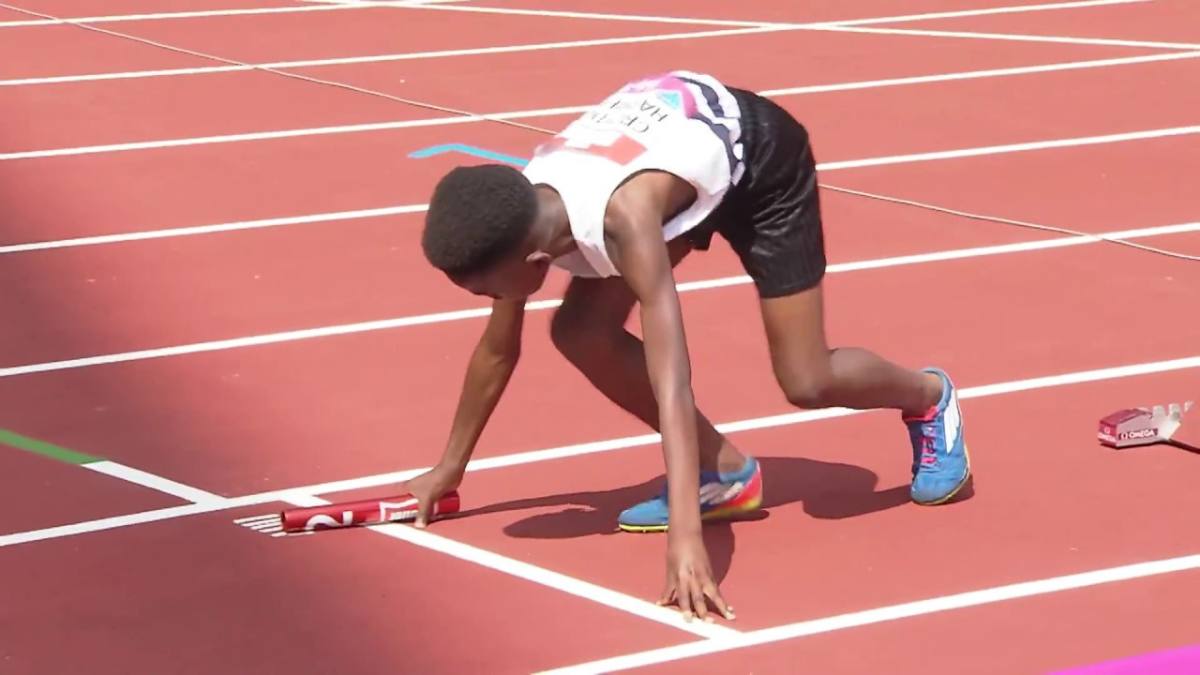There are four kinds of relays: 4 x 100, 4 x 200, 4 x 400, and sprint. If you are training for a sprint relay race, (4×100 or 4×200), focus on your speed and acceleration. Sprinting is all about the first 10-20 meters: if you can get out fast, you’ll generally win. In a 4×400 or similar race, you need to be proficient at running a range of speeds and distances.
In the following series, I cover four different training plans for each type of relay race: sprints, mid-distance (4×400), long-distance (4×800), and a plan for those doing the race as a workout. With this type of understanding, it can be easier to use the Super 6 tips to pace wagers for your favorite athlete in the relay races.
In each section, I’ll cover what kind of shape you should be in before starting this program, and how long it will take to complete the distance/workout.
To prepare for a sprint relay:
At least 3 months out – Be able to run 200m in 27 seconds or less.
One month out – Be able to run 200m in 24 seconds or less.
Two weeks out – Be able to run 100m in 11 seconds or less (or 90 seconds for girls).
The workout: Run 3 x 300 meters at maximal speed with a 90-second rest interval between sets. Do 6-8 reps of 300 meters.
The workout: Run 300m once a week and 400m on the other days. Do an interval on one of those 400m days and run 9 x 100 meters at maximal speed with a 60-second rest interval between reps and 2 minutes between sets. Do 3-4 reps per session per week, depending on your conditioning, and rest for a day after the session.
The workout: Do 3 reps of one mile at a 1-minute slower than goal pace with a 3-minute rest between reps and 10 minutes between sets. The workout should be done once every 10 days, or 2 sessions per week.
You should have no trouble running 800 meters in less than 2:10, at least one month before your race.
Athletes in the 4 x 400 should have no trouble running a mile in less than 5 minutes and 20 seconds, at least one month before their race.
The workout: Run one practice session per week of either 1 x 800 meters or 3 x 400 meters at current goal pace with 90 seconds to 3 minutes rest between reps. Practice speed endurance.
At least one month out, your goal pace should be under 2:40 for men and 4:20 for women.
The workout: Run 10 x 400 meters at current goal pace with a 200m jog recovery between reps and 30 seconds recovery after each rep. The workout should be done twice a week and no sooner than one week before your race.
There’s not much to say about this: if you can run 400 meters in over 1:20, you’re ready to do the 800-meter leg of a 4 x 400 relay; if you can run 800 meters in under 2:10, you’re ready for the 800-meter leg of a 4 x 800 relay.
The workout: Do 1 x 400 meters, 1 x 600 meters, and 1 x 800 meters at goal pace with 60 seconds rest between reps and 5 minutes between sets. The workout should be done once every 10 days as your conditioning allows, or 2 sessions per week as you get closer to race day.
The workout: Run 5 x 300 meters at maximal speed with a 90-second rest interval between reps and 3 minutes between sets. Do 4 sessions per week as you approach your race date, with 1 session per week for the final two weeks before your race.
At least one month out, do 8 x 200 meters at maximal speed with 200-meter jog recovery between reps and 90 seconds rest between sets. Run this workout once every 10 days starting 2 weeks out from your race date.
Who Can Run Relay Races?
Anyone who can run can run a relay race. The age-old joke in high school is “can you count to three, four different times?” But actually, even if you can’t do math very well, this is perfectly fine for most kids. Kids are typically not so concerned with running the perfect race pace or doing workouts of maximal effort. Rather, the fun-loving nature of relay races encourages kids to enjoy running and have some physical competition on the track.
Final Thoughts
Relay races can be a confusing affair, without proper guidance. However, with the workout plans shared above, you can be sure to have a strong team in the relays this season! All the best as you prepare and train to be the best in relay races.






























